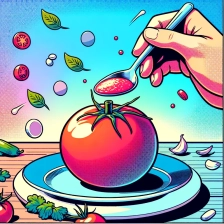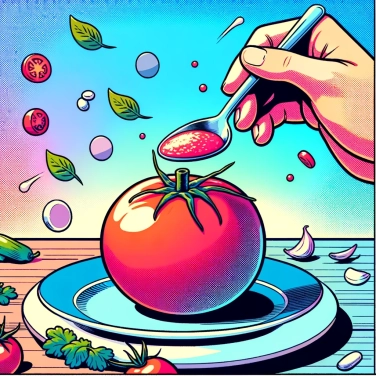In detail, for those interested!
Water loss
When the tomato is cooked, one of the main reasons for the change in its taste lies in the loss of water. Indeed, cooking leads to a release of the water contained inside the tomato cells. This loss of water results in concentrating the other components of the tomato, thus altering its initial taste. The reduction of water content in the tomato due to heat alters its texture and can affect its flavor, making it sometimes sweeter or more acidic, depending on the varieties of tomatoes and cooking conditions.
Sugar concentration
When the tomato is cooked, the concentration of sugars inside the fruit increases. Indeed, the heat applied during cooking allows the sugar molecules naturally present in the tomato to concentrate further. This increased sugar concentration helps intensify the sweet taste of the tomato once cooked. The sugars naturally present in the fruit are thus more in solution in the liquid that has formed during cooking. This amplifies the sweet taste perception, contrasting with other flavors such as acidity, to create a more complex balance of flavors.
Release of aromatic molecules
When cooking tomatoes, aromatic molecules present inside the plant cells are released. This release process is due to the heat applied during cooking, which acts on the cell walls and allows the aromatic compounds to escape. The molecules responsible for the characteristic aroma of tomatoes, such as linalool, β-ionone, or 3-methylbutanal, are thus released and diffuse into the air, giving cooked tomatoes their distinctive fragrance. These aromatic molecules are originally formed in the tomato during its ripening, but they are only fully released after being exposed to heat during cooking.
![Explain why some countries change time zones?]()
![Explain why chilling the butter before working it into puff pastry dough ensures a better texture.]()
![Explain why Alexander the Great refused to wear shoes.]()
![Explain why Alexander the Great always wore an impressive helmet.]()





















